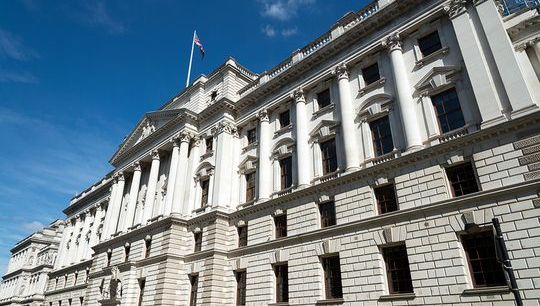Why is joining the 'culture club' so hard?
By Ranjeet Sahni, Dymon Asia Capital
Published: 20 September 2021
"Whosoever desires constant success must change his conduct with the times."— Niccolò Machiavelli
We are no longer allowed to hide behind the façade of ‘culture’ being a random, abstract term that cannot be measured. Culture is the way people do things. Culture is not a static concept and therefore it must be constantly monitored and improved upon. This is the expectation from global regulators.
Firms are being asked to inspect their own cultures through the lens of individual accountability regimes. The litany of previous scandals, coupled with the disproportionate lack of individual sanctions, created an uproar amongst society. Regulators have decided to act, to hold individuals more accountable to their actions, as well as others at their firms. Individuals are potentially liable to receive a variety of sanctions including fines, bans from working within the financial industry and even imprisonment in the most extreme cases.
To demonstrate the strength of a firm’s culture, firms will be assessed as to how they manage ‘conduct risk’, which, in simple terms, is the risk associated with the bad behaviour of individuals linked to the firm that can cause detriment to other individuals at the firm, the firm itself and potentially to the wider industry (including investors). Commonly cited examples of conduct risks materialising include insider trading/market abuse, conflicts of interest and fraud, to name a few. The reason why conduct risk matters so much is that it goes beyond compliance and regulatory risks. There are no sections of regulatory rulebooks that specifically focus on culture and conduct risks. Everyone reading this article will be aware of the plethora of rules and regulations that govern this industry. That said, there are not (and cannot be) rules and regulations for every single type of behaviour, so firms are expected to establish a robust culture of promoting good behaviour whilst discouraging misconduct.
How do you evidence culture?
There are various ways to demonstrate what the culture of one’s firm is: policies, procedures, registers, terms of reference, organisational charts and other documents can support a firm’s strong culture and mitigation of conduct risks. These are undoubtedly important, given the scrutiny of regulators, investors and auditors alike. To cherry-pick a few:
- Tone from the top – clear and constant messaging and behaviour from senior management to the rest of the firm, demonstrating how seriously they take shaping the firm’s culture. This can be evidenced via firm/fund board meetings and regular business updates/townhall calls/meetings. Some firms even ask their leadership teams to take personality and/or intelligence tests (including the use of psychologists – think Wendy Rhoades from the TV show Billions)
- Providing a safe space to speak up – creating an environment where people can raise issues about work or work-related behaviour without fear of retaliation. If employees have this freedom, more issues are likely to be addressed earlier than before (where someone may have sat on it because they did not have the confidence to come forward), thereby being beneficial for the employee and the firm.
- Surveillance – given the hybrid work environments we are now living in, it is harder to track how everyone is behaving, but firms are still expected to do this. What are people saying to each other on a day-to-day basis? How does this reflect how the firm wants to be portrayed? If you have the resources, you can even go down the natural language processing path to discover personality traits (although beware that there are Machiavellians out there who will try to 'game the system' and deliberately be nice when it comes to writing emails and chats).
- Remuneration – considering good conduct when rewarding/promoting people and showing that bad conduct can be detrimental (e.g., not promoting someone who would have been promoted because they have been very good at their job – what they were strictly employed to do - but who repeatedly breaches compliance policies).
The running theme for the four points above is they all focus on behaviour – i.e., how we act and the consequences of our actions. Changing policies to adapt to the times is important but arguably, changing behaviour is even more important. What is the point of having an excellent suite of policies if nobody abides by them? Changing behaviour rarely happens instantaneously and can sometimes not happen at all, so how does one proceed to solve this inherently tricky problem?
How does one try to change a firm’s culture?
As humans, we do not like change. Change makes us anxious. We like sticking to doing the same thing day in, day out, even when we know those actions do not benefit us. We constantly seek confirmation bias. So how do we change our routine and therefore our behaviour of our firms’ leaders in particular?
An interesting take on this comes from Dr Jonah Berger, a marketing professor at the University of Pennsylvania’s Wharton School of Business, in his book The Catalyst: How to Change Anyone’s Mind. His overarching thought is that instead of using the brute force of facts and figures to change people’s minds, it’s more efficient to figure out the catalysts to reduce the barriers to change in the first place.
He talks about five key roadblocks, via the acronym REDUCE, which I have attempted to frame within the context of our industry:
| The REDUCE roadblocks | Potential solutions for reducing those roadblocks |
|---|---|
| Reactance – when pushed, people push back | Get people to persuade themselves – e.g., provide case studies on conducting risk-related scenarios within training sessions and get the audience to answer for themselves what they should do |
| Endowment – people are used to their way of doing things so unless it is terrible, they do not want to switch |
Explain that there is a cost to doing nothing– if you change nothing, nothing changes. Investors, auditors and regulators (as key external stakeholders) as well as employees themselves, all have expectations that the firm must continue to change with the times. Doing nothing can lead to bad outcomes for the firm (e.g. lack of future subscriptions, redemptions of current investments, high employee turnover or even an increased number of audit points and increased regulatory action). The latter two points would have to be disclosed to investors anyway, as part of operational due diligence, thereby creating a vicious cycle. |
| Distance - if new information is within people’s zone of acceptance, they’re willing to listen; if it is too far away, in the region of rejection, everything flips |
Agreeing to a small, related ask moved people in the right direction so that the final ask (previously too far away) was now within the zone of acceptance – e.g. so this could be focusing on providing training to employees who come across as more compliance-friendly first and then others later. |
| Uncertainty – change introduces uncertainty |
Lowering the barrier to trial something – this is arguably quite difficult to achieve because firms do not have the luxury of trialling out regulations (unless firms adopt the proposed behaviours that regulators would like when they release consultation papers). However, discussing the change in collaboration with others (see below) can provide clarity about what needs to change. |
| Corroborating Evidence - the more people you can get to provide corroborating evidence, the more likely it becomes someone will choose to join their ranks | Getting more people on board, depending on the size and nature of the change –as an industry, we rely so much on our peer networks as a great source of corroborating evidence and should continue to do so, when change is abounding. There are clearly also benefits from broadening that network to include service providers such as lawyers, consultants and auditors. The bigger the change, the more time, the greater the number of people required and the broader the media required to persuade others to follow suit. |
I have said that we are all generally immune to change and leaders are no different. Leaders have been specifically targeted by regulators because they are those that demonstrably represent the culture of their firm. Leaders have a disproportionate impact on their firm’s culture. When they adapt their behaviour and thinking, they can communicate their messages to the rest of the firm with greater sincerity and authenticity. Middle managers can then pick up the baton from senior leadership teams and use the power of stories to promote ethical behaviour throughout the firm. Even employees that really do not like change will tend to follow their leaders, due to a preference to conform, instead of standing out.
Future outlook
Evidencing one’s culture through documentation is undoubtedly important. In my humble view (these views are not representative of anyone else or Dymon Asia generally by the way), the greater challenge is ensuring that mindsets (especially those of leaders) are actually aligned to the culture the firm is trying to portray. The focus on changing behaviour regarding conduct and individual accountability is a microcosm of the fundamental shift in behaviour we have all had to make since the beginning of 2020, so it can be done.





